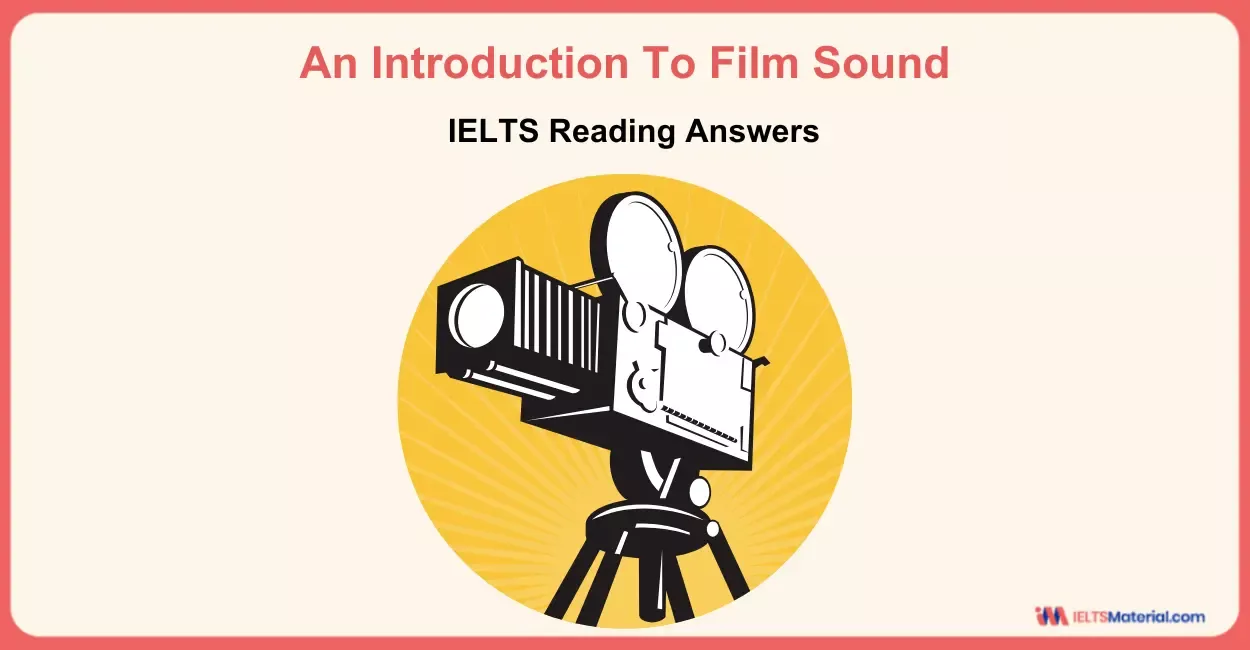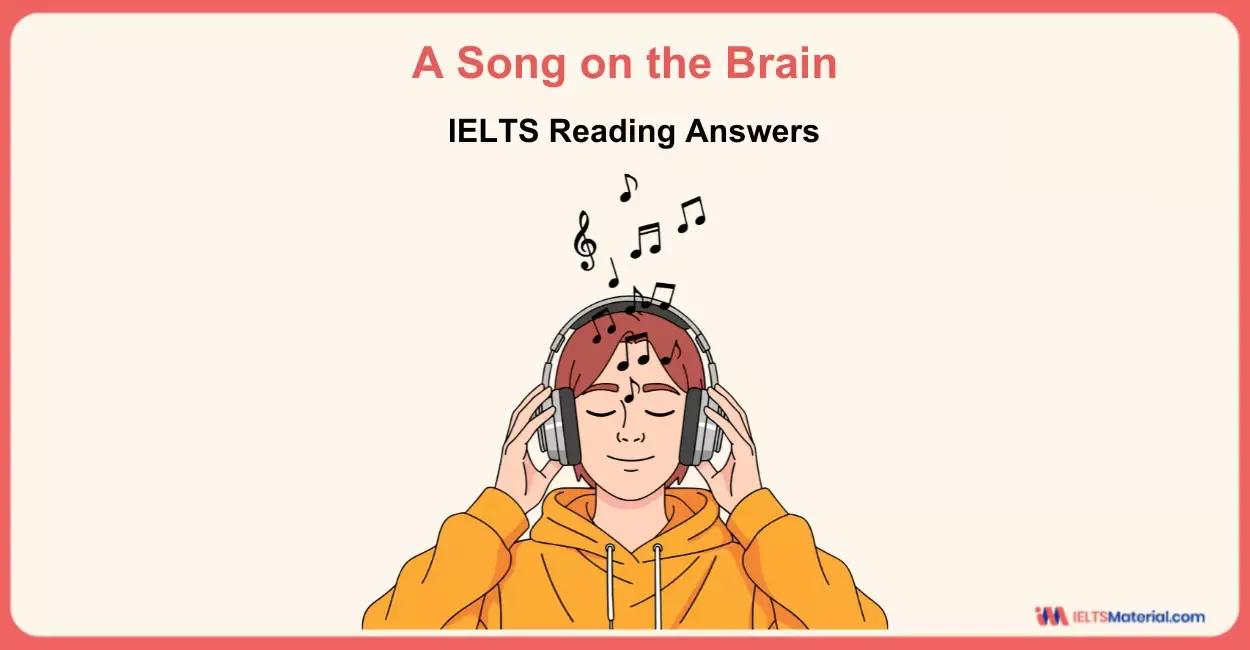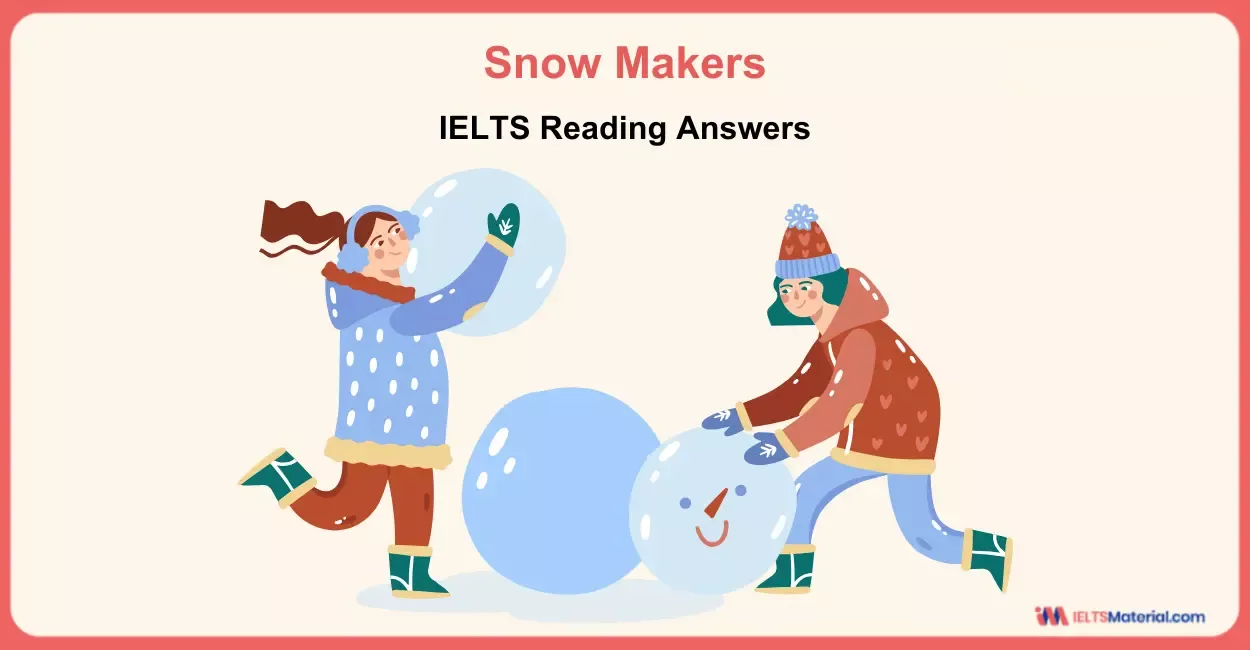The California Gold Rush - IELTS General Reading Answers
12 min read
Updated On
-
Copy link
The California Gold Rush is an IELTS General Reading passage from IELTS Cambridge 15 Test 1 that comes with 13 questions. Use this reading test to prepare for a band 9 in the IELTS Reading exam.
Table of Contents

Limited-Time Offer : Access a FREE 10-Day IELTS Study Plan!
The General Training Reading module covers things that one could come across in daily life, such as notices, advertising, test practices, documents, workplace and other simpler topics linked to the workplace. In order to score well in this part, students must be proficient readers who can also apply their knowledge to real-world situations, as demonstrated in a passage like ‘The California Gold Rush’, which is a part of Cambridge IELTS 15 Test 1.
The IELTS General passage, ‘The California Gold Rush’ is great for practice because they imitate the kinds of questions given in the IELTS Reading. You should absolutely start practicing timed IELTS General Reading practice tests on a regular basis if your goal is to become proficient in these passages and obtain a high reading band score.
The passage ‘The California Gold Rush’ contains 13 questions. The question types found in these passages are:
- IELTS Reading Multiple-Choice Question (Q. 1-4)
- Matching Information IELTS Reading (Q. 5-9)
- IELTS Reading Summary Completion (Q. 10-13)
Get quick tips to solve passages like ‘The California Gold Rush ‘ in 20 minutes!
Reading Passage
The California Gold Rush of 1849
The discovery of gold in the Sacramento Valley sparked the Gold Rush, arguably one of the most significant events to shape American history in the 19th century.
A On January 24, 1848, James Wilson Marshall, a carpenter, found small flakes of gold in the American River near Coloma, California. At the time, Marshall was working to build a water-powered sawmill for businessman John Sutter. As it happens, just days after Marshall’s discovery, the Treaty of Guadalupe Hidalgo was signed, ending the Mexican-American War and transferring California, with its mineral deposits, into the ownership of the United States. At the time, the population of the territory consisted of 6,500 Californios {people of Spanish or Mexican descent); 700 foreigners (primarily Americans); and 150,000 Native Americans.
B Though Marshall and Sutter tried to keep news of the discovery quiet, word got out, and by mid-March 1848 at least one newspaper was reporting that large quantities of gold were being found. Though the initial reaction in San Francisco was disbelief, storekeeper Sam Brannan set off a frenzy when he paraded through town displaying a small bottle containing gold from Sutter’s Creek. By mid-June, some three-quarters of the male population of San Francisco had left town for the gold mines, and the number of miners in the area reached 4,000 by August.
C As news spread of the fortunes being made in California, the first migrants to arrive were those from lands accessible by boat, such as Oregon, the Sandwich Islands {now Hawaii), Mexico, Chile, Peru and even China. Only later would the news reach the East Coast, where press reports were initially skeptical. Throughout 1849, thousands of people around the United States (mostly men) borrowed money, mortgaged their property or spent their life savings to make the arduous journey to California. In pursuit of the kind of wealth they had never dreamed of, they left their families and local areas; in turn, their wives had no option but to shoulder different responsibilities such as running farms or businesses, and many made a real success of them.
By the end of the year, the non-native population of California was estimated at 100,000 {as compared with 20,000 at the end of 1848 and around 800 in March 1848). To accommodate the needs of the ’49ers, as the gold miners were known, towns had sprung up all over the region, complete with shops and other businesses seeking to make their own Gold Rush fortune. The overcrowded chaos of the mining camps and towns grew ever more lawless. San Francisco, for its part, developed a bustling economy and became the central metropolis of the new frontier.
D How did all these would-be miners search for gold? Panning was the oldest way. The basic procedure was to place some gold-bearing materials, such as river gravel, into a shallow pan, add some water, and then carefully swirl the mixture around so the water and light material spilled over the side. If all went well, the heavier gold nuggets or gold dust would settle to the bottom of the pan. Gold panning was slow even for the most skillful miner. On a good day, one miner could wash about 50 pans in the usual 12-hour workday.
E Another way was to use what was called a ‘rocker’. Isaac Humphrey is said to have introduced it to the California gold fields. It was simply a rectangular wooden box, set at a downward angle and mounted on a rocking mechanism. The dirt and rock was dumped into the top, followed by a bucket of water. The box was rocked by hand to agitate the mixture. The big rocks were caught in a sieve at the top, the waste exited the lower end with the water, and the heavy gold fell to the bottom of the box.
The rocker had advantages and disadvantages. The advantages were that it was easily transportable; it did not require a constant source of water; and, most importantly, a miner could process more dirt and rock than with a pan. The primary disadvantage was that the rocker had difficulty in trapping the smallest particles of gold, commonly known as ‘flour’. Some miners added small amounts of mercury to the bottom of the rocker. Due to its chemical composition, it had a facility to trap fine gold. Periodically, the miners would remove and heat it. As it vaporized, it would leave gold behind.
F After 1850, the surface gold in California had largely disappeared, even as miners continued to reach the gold fields. Mining had always been difficult and dangerous labor, and striking it rich required good luck as much as skill and hard work. Moreover, the average daily pay for an independent miner had by then dropped sharply from what it had been in 1848. As gold became more and more difficult to reach, the growing industrialization of mining drove more and more miners from independence into wage labor. The new technique of hydraulic mining, developed in 1853, brought enormous profits, but destroyed much of the region’s landscape.
G Though gold mining continued throughout the 1850s, it had reached its peak by 1852, when gold worth some $81 million was pulled from the ground. After that year, the total take declined gradually, leveling off to around $45 million per year by 1857. Settlement in California continued, however, and by the end of the decade the state’s population was 380,000.
Questions 1-4
Choose the correct letter A, B, C, or D.
Write the correct letter in boxes 1-4 on your answer sheet.
1 The writer suggests that Marshall’s discovery came at a good time for the US because
A the Mexican-American War was ending so there were men needing work.
B his expertise in water power would be useful in gold mining.
C the population of California had already begun to increase rapidly.
D the region was about to come under the control of the US.
2 What was the reaction in 1848 to the news of the discovery of gold?
A The press played a large part in convincing the public of the riches available.
B Many men in San Francisco left immediately to check it out for themselves.
C People needed to see physical evidence before they took it seriously,
D Men in other mines in the US were among the first to respond to it.
3 What was the result of thousands of people moving to California?
A San Francisco could not cope with the influx of people from around the world.
B Many miners got more money than they could ever have earned at home.
C Some of those who stayed behind had to take on unexpected roles.
D New towns were established which became good places to live.
4 What does the writer say about using pans and rockers to find gold?
A Both methods required the addition of mercury.
B A rocker needed more than one miner to operate it.
C Pans were the best system for novice miners to use.
D Miners had to find a way round a design fault in one system.
Questions 5-9
The text has seven sections A-G.
Which section contains the following information?
5 a reference to ways of making money in California other than mining for gold
6 a suggestion that the gold that was found did not often compensate for the hard work undertaken
7 a mention of an individual who convinced many of the existence of gold in California
8 details of the pre-Gold Rush population of California
9 a contrast between shrinking revenue and increasing population
Questions 10-13
Complete the summary below.
Choose ONE WORD ONLY from the passage.
Basic techniques for extracting gold
The most basic method used by many miners began with digging some 10………………… out of a river and hoping it might contain gold. Small amounts were put in a pan with water. The pan was spun round, causing the liquid and less heavy contents of the pan to come out. Gold dust, which weighed more, remained in the pan or, if the miners were very lucky, there might even be some 11………………… too. It was, however, a very laborious method.
The rocker was also used. A miner would put some earth and rock into the higher end, together with some water. He would then shake the rocker. Larger stones stuck in the 12………………… , while gold dropped to the bottom. Unfortunately, the rocker was not designed to catch what was called flour. However, a process was introduced involving 13………………… to ensure no gold was washed out in the water.
Searching for Exclusive IELTS General Reading content for practice?
Check out The Ultimate Guide to IELTS General Reading!
Answers for The California Gold Rush Reading Passage with Location and Explanations
Check out the answer key for this IELTS General Reading passage, The California Gold Rush, with detailed explanations for each of them.
1 Answer: D
Question type: Multiple-Choice Question
Answer Location: Paragraph A, Line 5
Answer Explanation: The passage states, “At the time, Marshall was working to build a water-powered sawmill for businessman John Sutter,” indicating that the region was about to come under the control of the US after the Treaty of Guadalupe Hidalgo.
2 Answer: C
Question type: Multiple-Choice Question
Answer Location: Paragraph B, Line 4
Answer Explanation: The passage mentions, “Though the initial reaction in San Francisco was disbelief,” suggesting that people needed to see physical evidence before taking the discovery seriously.
3 Answer: C
Question type: Multiple-Choice Question
Answer Location: Paragraph E, Lines 3 – 4
Answer Explanation: It is stated, “Some of those who stayed behind had to take on unexpected roles,” indicating that some individuals had to shoulder different responsibilities due to others leaving for California.
4 Answer: D
Question type: Multiple-Choice Question
Answer Location: Paragraph F, Lines 1-2
Answer Explanation: The passage discusses the disadvantage of the rocker, which had difficulty in trapping the smallest particles of gold, indicating that miners had to find a way around a design fault in one system.
5 Answer: B
Question type:Matching Information
Answer Location: Paragraph G, Lines 1-2
Answer Explanation: Paragraph F mentions the decline in daily pay for independent miners and their shift towards wage labor, suggesting that the gold found did not often compensate for the hard work undertaken.
6 Answer: F
Question type: Matching Information
Answer Location: Paragraph F, Lines 1-2
Answer Explanation: The paragraph discusses the decline in daily pay for independent miners, indicating that the gold found did not often compensate for the hard work undertaken.
7 Answer: B
Question type: Matching Information
Answer Location: Paragraph B, Lines 5-6
Answer Explanation: The passage mentions Sam Brannan who set off a frenzy by displaying gold from Sutter’s Creek, convincing many of the existence of gold in California.
8 Answer: A
Question type: Matching Information
Answer Location: Paragraph A, Lines 3-4
Answer Explanation: Paragraph A provides details of the pre-Gold Rush population of California, stating, “At the time, the population of the territory consisted of 6,500 Californios… and 150,000 Native Americans.”
9 Answer: G
Question type: Matching Information
Answer Location: Paragraph F, Lines 3-4
Answer Explanation: Paragraph F contrasts the decline in revenue from gold mining with the increasing population in California.
10 Answer: gravel
Question type: Summary Completion
Answer Location: Paragraph D, Line 1
Answer Explanation: The passage mentions, “The basic procedure was to place some gold-bearing materials, such as river gravel, into a shallow pan.”
11 Answer: nuggets
Question type: Summary Completion
Answer Location: Paragraph D, Line 6
Answer Explanation: It is stated, “If all went well, the heavier gold nuggets or gold dust would settle to the bottom of the pan.”
12 Answer: sieve
Question type: Summary Completion
Answer Location: Paragraph E, Line 2
Answer Explanation: The passage discusses the rocker, stating, “The big rocks were caught in a sieve at the top.”
13 Answer: mercury
Question type: Summary Completion
Answer Location: Paragraph E, Lines 5-6
Answer Explanation: The passage mentions the addition of mercury to the bottom of the rocker to ensure no gold was washed out in the water.
Tips to Solve the Passage Question Types in The California Gold Rush Reading Answers
Since now you know the answers to The California Gold Rush’ Reading Answers, let us check out some quick IELTS exam preparation tips to answer the question types in the Reading Answers of The California Gold Rush Reading Answers.
Multiple-Choice Questions:
You will be given a reading passage followed by several questions based on the information in the paragraph in multiple-choice questions. Your task is to understand the question and compare it to the paragraph in order to select the best solution from the available possibilities.
- Before reading the passage, read the question and select the keywords. Check the keyword possibilities by using IELTS Reading keyword techniques if the question statement is short on information.
- Then, using the keywords, read the passage to find the relevant information.
- To select the correct option, carefully read the relevant words and match them with each option.
- You will find several options with keywords that do not correspond to the information.
- Try opting for the elimination method mostly.
- Find the best option by matching the meaning rather than just the keywords.
Matching Information:
In this type of question, you will have to match a list of options with the relevant set of statements. Some tips to answer matching Information questions and obtain a high band in IELTS exam are given below:
- Read questions and underline or circle keywords. This will help you find out where you would have to read and find later. Also, focus on how often every detail or name is appearing in the passage.
- Scan the passage and look for information given in the features and questions.
- Skim through the areas that are surrounded by keywords and features in the passage.
- Don’t get confused in case the text has synonyms of the information that is originally present in the question.
- Keep in mind that answers will not be in an order as questions.
Summary Completion:
Summary Completion is a type of IELTS reading question that requires you to fill in a gap in a paragraph with a word or phrase from the passage.
To answer summary completion questions, you can use the following strategies:
- Read the sentences carefully: This will give you an idea of the type of word or phrase that is missing.
- Scan the passage for the keywords: The keywords in the sentence can help you to identify the correct word or phrase.
- Read the sentence with the missing word or phrase: This will help you to see how the word or phrase fits into the sentence.
- Check your answer: Once you have filled in the gap, make sure that your answer makes sense in the context of the sentence.
Also Check:
- General Reading Tips And Tricks
- IELTS General Reading Preparation
- Useful IELTS Reading Articles, Website Resources and Material for Academic and General Training
- Phi Phi Island Resort – IELTS Reading Answers
- We French Do Love to Demonstrate – IELTS Reading Answers
- 20 Best IELTS Preparation Books for Self Study
- Time Management for IELTS Reading
Practice IELTS Reading based on question types

Start Preparing for IELTS: Get Your 10-Day Study Plan Today!
Explore other Reading Practice Tests

Kasturika Samanta

Nehasri Ravishenbagam

Nehasri Ravishenbagam

Kasturika Samanta
Recent Articles

Nehasri Ravishenbagam

Haniya Yashfeen

Haniya Yashfeen

Haniya Yashfeen




Post your Comments